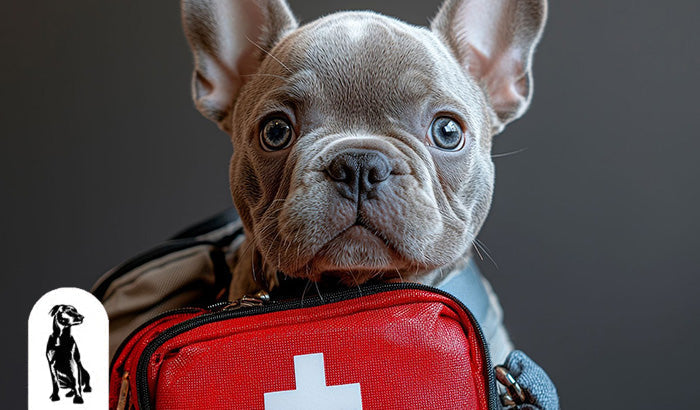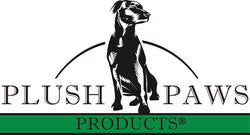
Keeping your pet healthy takes more than routine shots. While vaccinations protect against dangerous diseases, they’re only part of the puzzle.
To truly safeguard your pet’s well-being, you need to stay ahead of other risks like parasites, dental disease, and poor nutrition. One major concern that often gets overlooked? Tick prevention. These tiny pests can spread serious illnesses fast, and they’re more common than you might think.
In this blog, we’ll break down the daily, weekly, and seasonal habits that help keep your pet thriving year-round. Keep reading to learn more.
Regular grooming keeps problems away
Dirt, mats, and loose fur do more than look messy. They cause infections, irritate skin, and hide parasites. Brushing helps spot bumps, rashes, or fleas before they become real trouble. Bathing removes debris, dead skin, and allergens.
Nails grow fast, and long ones affect walking and posture. Ear cleaning stops bacteria from building up. Grooming doesn’t only boost appearance; it also prevents discomfort and helps catch hidden healthcare issues early.
Clean teeth, healthy pet
Bad breath isn’t normal; it signals bacteria, plaque, or worse. And dental problems lead to infection, pain, and even organ damage. Brushing a pet’s teeth stops buildup and keeps gums strong. Always use pet-safe toothpaste.
Chew toys and dental treats help, too, but nothing replaces the brush. Look for red gums, brown teeth, or drooling. These signs mean trouble; ignoring them shortens your pet’s life.
Exercise keeps their bodies sharp
A lazy pet gets sick faster. Obesity causes joint issues, heart strain, and shorter lifespans. Daily walks, indoor play, or fetch in the yard improve mobility and mood.
Dogs need regular movement. Cats need chase toys, climbing trees, and laser pointers. Keep their bodies active to keep their systems working right.
Watch their weight closely
Overfeeding happens fast. Table scraps add up, and treats pile on pounds. Measure food and avoid giving in to the begging eyes. Use scales or feel their ribs to track weight. Talk to your vet about ideal portions. Weight gain sneaks in slowly but leaves lasting damage. Don’t wait until movement becomes hard. Keep their size under control from the start.
Track their activity alongside food intake. Some dogs need more fuel, while others burn less, so monitor how much they move each day. A lazy afternoon doesn't need a full meal. Adjust portions when exercise drops, and keep meals lined up with their pace.
Fresh water: all day, every day
Water bowls dry out quicker than most people think. Pets need constant access to clean, cool water. Stale or dirty water grows bacteria. Wash bowls daily and refill them often. Hydration helps digestion, keeps kidneys healthy, and regulates body temperature.
Tick prevention and flea control matter
Ticks latch on during walks, yard play, or contact with other animals. Once they bite, they spread disease fast. Use vet-recommended tick prevention methods year-round.
Check your pet’s coat after time outside. Fleas multiply rapidly and bring misery, so don’t wait for scratching to start. Keep up with treatments, even in cooler months.
Parasite checks save lives
Worms don’t show up until it’s serious; internal parasites hide in the gut, lungs, or heart. They drain nutrients, slow growth, and damage organs. Monthly preventatives and annual stool checks catch problems early. Heartworms kill silently, so stay on schedule with your pet’s medications. Prevention beats treatment every time.
Provide a balanced diet
Table food throws off nutrient balance, and cheap kibble lacks quality. Pets thrive on protein, healthy fats, vitamins, and clean ingredients. Match food to age, breed, and activity level.
Puppies and seniors have different needs. So do large and small breeds. Don’t assume one food fits all. Rotate proteins, mix wet and dry foods together, and avoid fillers. Good food builds strong bodies.
Always read the label. Ingredients listed first make up most of the food. Avoid mystery meats and artificial dyes. Choose foods where meat tops the list, not corn or meat by-products. High-quality nutrition supports digestion, energy levels, and immune function. Food isn't fuel alone.
Keep their space clean
Beds, bowls, toys, and crates collect grime fast. Dirty spaces grow bacteria and trigger allergies. Wash bedding weekly, clean toys and bowls with soap and hot water, and vacuum pet areas often. Use pet-safe cleaning products. A clean home supports a healthy pet. Don’t let their corner turn into a health care hazard.

Schedule yearly checkups
Vets catch what eyes miss. Annual visits track weight, spot early issues, and update preventatives. Bloodwork reveals hidden conditions and early detection leads to easier treatment. Even if your pet looks fine, checkups matter. One appointment each year makes a huge difference. Stay consistent, and don’t skip.
Monitor changes in behavior
Pets speak through action, not words. Sudden changes mean something’s wrong. A playful dog who hides or a hungry cat who stops eating signals a problem. Watch for limping, shaking, over-grooming, or vocal changes. Trust your gut. If something feels off, it probably is. Take notes and call your vet.
Mental health affects physical health
Boredom leads to anxiety, destruction, and depression. Keep your pet mentally stimulated. Puzzle toys, training sessions, and new games help their brains stay sharp. Dogs love problem-solving. Cats enjoy new scents and textures. Change up their routine and keep their minds working. A tired brain makes a peaceful pet.
Socialization builds confidence
Isolated pets become fearful. Early and positive exposure to other animals, people, and places builds trust. Dogs need leash walks in public spaces. Cats benefit from gentle handling and new environments. Start slow. Watch their reactions. Social skills help them stay calm during vet visits, grooming, or boarding. Confidence keeps them healthy.
Limit toxic exposure
Many household items harm pets. Chocolate, grapes, onions, and xylitol cause serious reactions. So do some plants, cleaners, and medications. Lock away anything unsafe. Research every treat or new item. One careless mistake brings disaster. Protect your pet like you would a toddler. Keep their space toxin-free.
Trim their nails
Overgrown nails change posture and cause pain. They curl into paw pads or crack under pressure. Trim regularly or get help from a groomer. Watch for limping or licking paws. If walking sounds like tap dancing, it’s time to trim. Healthy nails mean comfortable steps.
Give them attention daily
Pets crave connection, and ignoring them causes stress. Spend time each day playing, petting, or training. They don’t need hours; they need consistency. A few minutes of focused interaction makes a significant impact. Strong bonds boost mental and physical health.
Provide safe chew options
Chewing helps reduce stress and cleans teeth. Give pets proper chew toys — not shoes or furniture. Supervise during chew time. Avoid hard items that break teeth. Rotate toys to keep interest high. The right chew toy keeps pets engaged and healthy.
Brush their coat regularly
Brushing prevents mats, reduces shedding, and boosts circulation. Long-haired pets need frequent brushing. Short-haired ones benefit, too. Use the right brush for their coat type. Check for lumps, ticks, and injuries while grooming. Turn brushing into bonding time.
Set up an emergency plan
Accidents happen. Be ready. Know your vet’s hours and location. Keep a pet first-aid kit stocked. Learn basic first-aid techniques. Save emergency numbers in your phone. Plan who handles your pet if something happens to you. Preparation saves lives.
Use tick prevention year-round
Ticks don’t follow calendars. Some survive cold months indoors or in warm climates, so it’s important to protect your pet every season. Tick prevention products range from collars to spot treatments. Choose what fits your pet’s needs and lifestyle.
Keep up with ID and microchips
Tags wear out or fall off; microchips back up your contact info. If your pet runs off, microchips increase the chance of them returning home. Update contact info with each move. Include your name, number, and address on all tags.
Don’t overlook hydration signs
Lethargy, sunken eyes, and dry gums mean dehydration. Pay attention, especially on hot days or after exercise. Encourage drinking by offering fresh water in clean bowls. Add water to food if needed. Hydration fuels every system inside the body.
Understand breed-specific needs
Not every pet thrives under the same rules. Bulldogs overheat fast. Huskies crave cold air. Dachshunds need spine support. Research your pet’s breed and understand their unique care needs so you can match their routine to their biology.

Respect their limits
Older pets slow down, while puppies tire fast. Don’t force activity or ignore rest signals. Each stage of life requires adjustments. Respecting where your pet is will keep them happy and safe.
Watch the weather
Hot pavement burns paws and cold air bites skin, but dog paw salve can help. Adjust your walk times and gear based on the weather conditions. Use booties or coats if needed. Always check the weather before heading out so you can keep their comfort first.
A healthy pet needs more than shots. Daily effort, smart choices, and close observation keep them thriving. You shape their health with every bowl of water, walk around the block, or game of fetch. Stay alert, stay involved, and make their well-being a priority every day.
Support essential health care for your dog with Plush Paws
Anxiety affects your dog’s overall health. Loud noises, unfamiliar environments, and sudden changes spike stress levels fast. That stress wears down their immune system, messes with digestion, and leads to destructive behavior. Plush Paws gives you simple ways to take control.
Stick to a steady routine, surround them with familiar comforts, and let our products handle the tough moments. From calming gear to vet-approved wellness aids, you can help protect their body and mind.
Plush Paws delivers reliable tools that fit right into your dog’s daily care. Shop now and make health a full-time habit without the guesswork.
